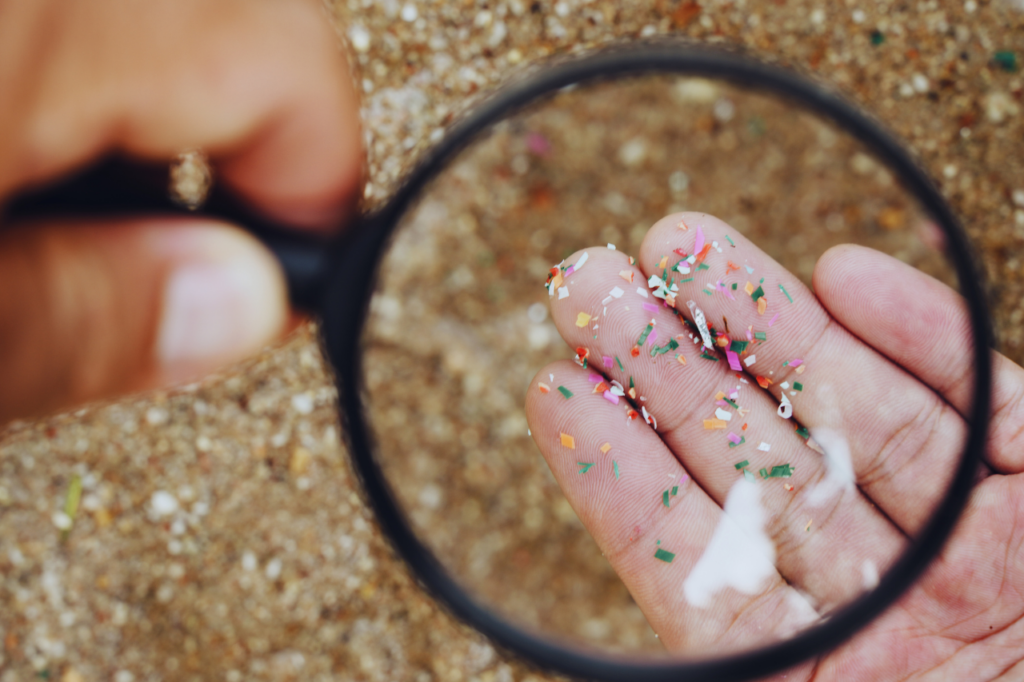

Microplastics are tiny fibres, fragments or particles of plastic smaller than 5 millimetres(0,197″). They can form through the breakdown of larger products or by starting out as tiny particles.
When released, these tiny particles can end up in wastewater and eventually in waterways, oceans, and soil, potentially affecting aquatic organisms and ecosystems. Animals can mistake the plastic for food, damaging their digestion, releasing hazardous chemicals, and negatively affecting reproduction. Humans are also affected; research shows we ingest microplastics equivalent to the weight of a credit card each week, mainly from drinking water and food.

Wash
The washing process is one of the most common causes of microplastic release from textiles. Synthetic fibres such as polyester, acrylic, and nylon, common in clothing and other textiles, can release small particles of plastic during the laundry in washing machines. Water, friction and chemicals used in washing can help break down these fibres and release the microplastics. For example, one study shows that a polyester jacket released an average of about 1.7 g of microfibres per wash. A significant source of microplastic in oceans, lakes and rivers is laundry wastewater.
Wear & tear
The use, tear and wear of clothes and textiles can release tiny plastic particles. Every time clothes are washed or used, especially if they are made of synthetic materials, microscopic plastic fragments can be released.
Manufacturing and handling
Microplastics can also arise during the textile manufacturing process. Cutting, sewing, and other processing steps of synthetic materials can release small particles.
Microplastics from textile materials are part of the plastic pollution problem in the environment. When these tiny particles are released, they can end up in wastewater and ultimately in streams, oceans, and soil, potentially affecting aquatic organisms and ecosystems. Reducing microplastic pollution from textiles often requires the use of alternative materials, improved clothing design to reduce particle release, or filtration and separation techniques during washing to capture these particles before they reach waterways.
Sources
Elsevier – Chapter 10: Waste management in fashion and textile industry ![]()
Elsevier – Microfibers in laundry wastewater ![]()
WWF – Plastic debris threatens the oceans’ species and ecosystems ![]()
WWF – Så mycket mikroplaster får vi i oss ![]()
February 2024, TÄNKOM | Revised July 2024 RETHINK



